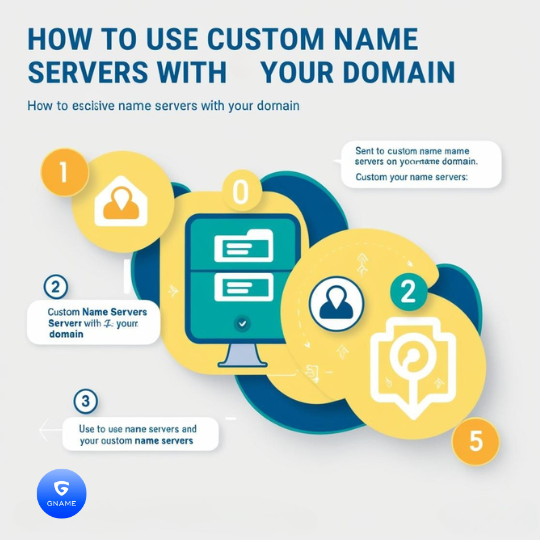Using custom name servers with your domain can enhance your website's performance and reliability. This guide will walk you through the steps of setting up custom name servers, the benefits they offer, and the common challenges you may encounter along the way.

Understanding Name Servers
Name servers play a critical role in the internet's infrastructure. They are part of the Domain Name System (DNS) and are responsible for translating human-readable domain names (like www.example.com) into IP addresses that computers use to identify each other on the network. When you register a domain, it typically comes with default name servers provided by your registrar. However, you may wish to use custom name servers for various reasons.
Custom name servers allow you more control over your DNS settings. By using your own name servers, you can manage DNS records more effectively, optimize performance, and implement specific security protocols. This is particularly beneficial for businesses and individuals who require a higher level of customization and reliability in their online presence.
Setting Up Custom Name Servers
1. Choose a DNS Hosting Provider
: The first step in setting up custom name servers is to choose a reliable DNS hosting provider. Some popular options include Cloudflare, Amazon Route 53, and Google Cloud DNS. Research their features, pricing, and performance to find the best fit for your needs.
2. Create Custom Name Servers
: Once you've selected a DNS provider, you'll need to create your custom name servers. This typically involves logging into your DNS hosting account and registering your name servers with unique names (e.g.,ns1.yourdomain.com, ns2.yourdomain.com).
3. Update Your Domain Registrar
: After creating custom name servers, you must update your domain registrar with your new name server information. Log into your domain registrar account, navigate to the DNS management section, and replace the existing name servers with your custom ones.
4. Configure DNS Records
: Now that your custom name servers are set up, you'll need to configure your DNS records through your DNS hosting provider's control panel. This includes setting up A records (for IP addresses), CNAME records (for aliases), MX records (for email), and any other necessary records.
5. Verify the Setup
: After configuring your DNS records, it's essential to verify that everything is functioning correctly. You can use online tools like DNS Checker to ensure your records are propagated and resolving as expected.
Benefits of Using Custom Name Servers
Using custom name servers provides several advantages:
-Increased Control
: Custom name servers give you complete control over your DNS settings. You can easily modify records, add new ones, and implement routing rules without relying on your registrar's limitations.
-Enhanced Performance
: Many DNS hosting providers offer advanced features like load balancing, caching, and geographical routing. These optimizations can significantly improve your website's load speed and performance.
-Improved Security
: Custom name servers allow you to implement security features such as DNSSEC (Domain Name System Security Extensions) to protect against DNS spoofing and cache poisoning attacks. This added layer of security can safeguard your domain and enhance your overall online safety.
-Better Reliability
: Using a dedicated DNS provider often results in better uptime and reliability compared to standard registrar name servers. Many providers have multiple data centers and redundancy measures to ensure continuous service.
Common Challenges
While setting up custom name servers has many benefits, there are some challenges to be aware of:
-Propagation Time
: After updating your name servers, it can take some time for the changes to propagate across the internet. This period, known as DNS propagation, can last anywhere from a few minutes to 48 hours, during which your website may be temporarily inaccessible.
-Complexity
: Managing custom name servers may be more complex than using default registrar settings. Users unfamiliar with DNS management might find it challenging to configure records correctly.
-Cost
: Some DNS hosting providers charge fees for their services. It's essential to consider your budget when choosing a provider.
Conclusion
Setting up custom name servers with your domain is a valuable step towards optimizing your online presence. By taking control of your DNS settings, you can enhance performance, security, and reliability. While there may be challenges along the way, the benefits far outweigh the drawbacks for most users. With this guide, you should be well-equipped to set up and manage your custom name servers effectively.























